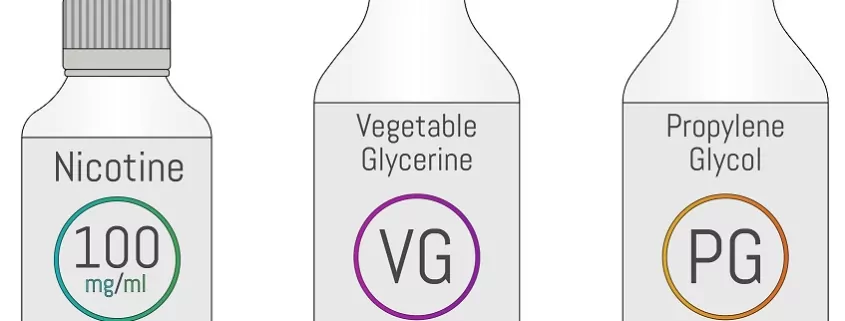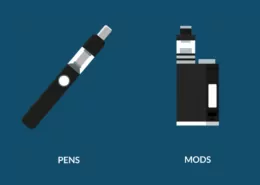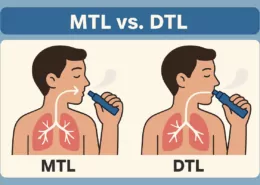What are PG and VG and How to Use Them?
In the world of vaping, two essential components make up the base of most e-liquids: Propylene Glycol (PG) and Vegetable Glycerin (VG). These two ingredients play a crucial role in determining the overall vaping experience, from flavor intensity to vapor production.
To make the most out of your vaping experience, it’s vital to understand the differences between PG and VG, their effects on e-liquids, and how to choose the right ratio for your preferences and device. In this article, we will explore the ins and outs of PG and VG to help you make an informed decision.
What is Propylene Glycol (PG)?
Definition and properties
Propylene Glycol (PG) is a synthetic, colorless, and odorless liquid that has a slightly sweet taste. It is widely used in various industries due to its versatility, low toxicity, and ability to mix with various substances.
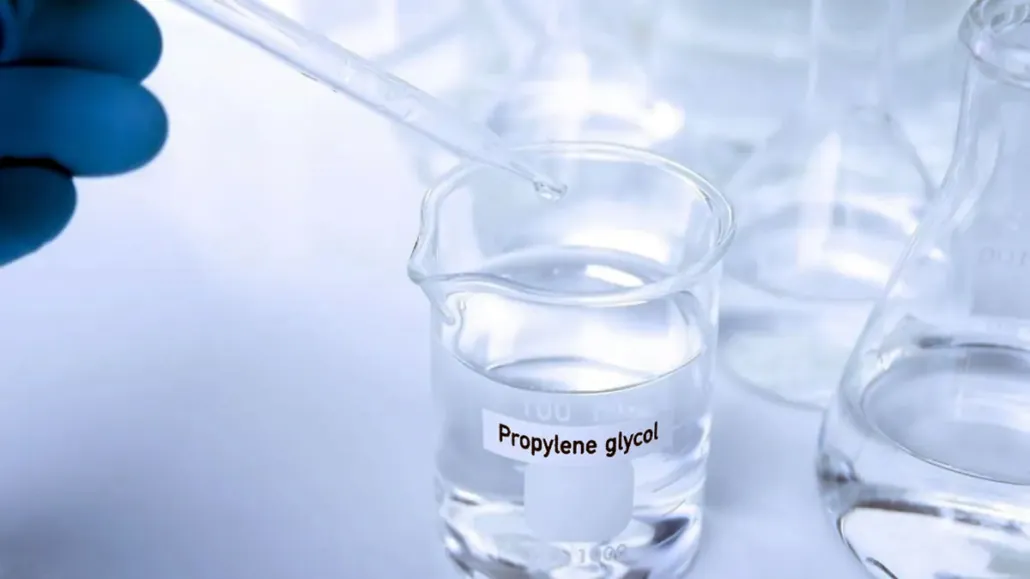
Key Characteristics of PG
Some of the key characteristics of PG include its ability to carry flavors effectively, deliver a stronger throat hit, and provide a thinner consistency for e-liquids. These properties make it a popular choice for e-liquids with higher PG ratios, catering to users who enjoy a more pronounced flavor and throat hit.
- Produces less vapour than VG due to its lower density: This makes it an ideal choice for those who want to be discreet while vaping and produce smaller clouds. Using a high PG e-juice can help achieve this desired effect.
- Higher flavour intensity: Unlike VG, which has a sweet taste, propylene is tasteless. Therefore, it delivers a sharper throat hit, which enhances the flavour of your e-juice. This sharp flavour hit can be appealing to some vapers.
- Delivers a stronger throat hit: PG also delivers a stronger throat hit similar to that of cigarettes, making it an excellent choice for those who have just switched from smoking to vaping. However, it can also be a disadvantage as it can dry your mouth and throat faster, especially if you are consistently vaping.
- Tasteless and odourless: meaning it does not alter the flavour of your e-juice. Additionally, it has a thinner consistency similar to water, which allows it to wick coils much faster. The cotton buds absorb thinner liquids faster, making it easier to wick and vape right away with high PG e-liquids.
- Cause allergic reactions: It can cause allergic reactions in a small percentage of vapers, making it a higher allergy risk than VG. These reactions can range from minor tingling sensations to unbearable scratching and burning sensations in your throat. If you experience any unusual symptoms while vaping PG, it’s best to stop using it and switch to MAX VG concentrates.
- Low density: there is a lower chance of gunk building up on the heating components of your vaporizer. However, it can still build up, albeit at a slower pace than the thicker VG liquid.
Is it safe?
PG has been deemed safe for human consumption by various health organizations, including the FDA. It is commonly found in many everyday products, such as food, cosmetics, and pharmaceuticals. However, some individuals may experience allergic reactions or sensitivities to PG, which can cause symptoms like skin irritation or respiratory issues.
Common uses of PG outside vaping
Aside from its use in e-liquids, PG can be found in various products, including food additives, pharmaceuticals, personal care products, and even antifreeze as a safer alternative to ethylene glycol. Amongst others, these include:
- Nicotine inhalers
- Toothpaste and other oral hygiene products
- Medical products used orally, injected or as topical formulations
- Pet food (excluding cat food)
- Beauty products, including make-up, shampoo and baby wipes
What is Vegetable Glycerin (VG)?
Definition and properties
Vegetable Glycerin (VG) is a natural, colorless, and odorless liquid derived from plant oils, such as soybean, palm, or coconut oil. It has a sweet taste and a viscous consistency, making it an ideal ingredient for various applications.
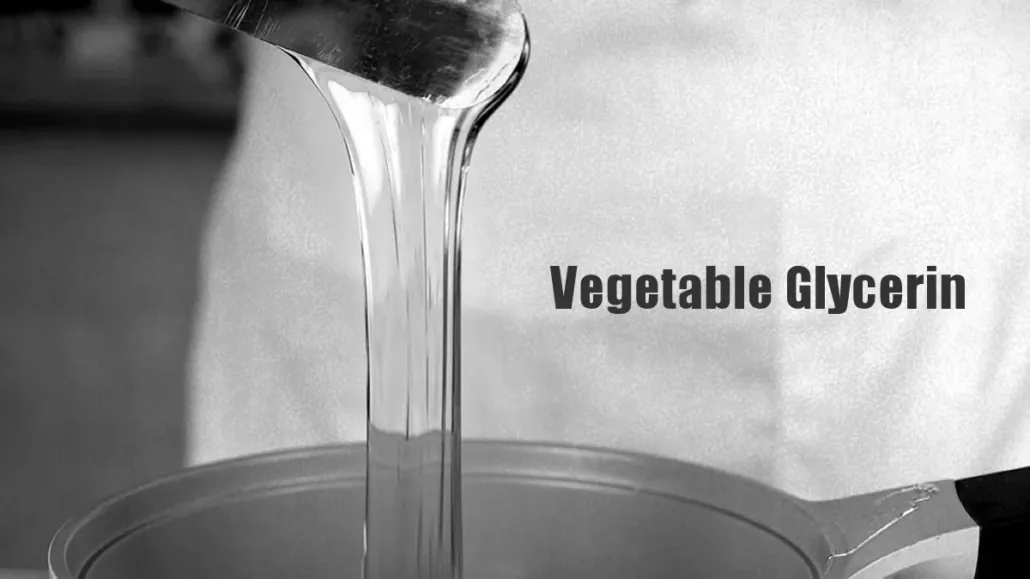
Key Characteristics of VG
VG is known for its ability to produce dense vapor clouds, provide a smoother throat hit, and deliver a thicker consistency for e-liquids. This makes it an excellent choice for those who enjoy cloud chasing and a more subtle throat hit.
- Producing large vape clouds: because of its thick consistency. It can produce significantly more vapour than PG liquids, making it a great choice for cloud chasers. If you’re looking for big, billowing clouds, then high VG e-juices are the way to go.
- Lower flavour intensity: VG has a slightly sugary note to it, which can mask the full potential of flavours, resulting in a lower flavour intensity compared to PG liquids.
- Weaker throat hit: making it an excellent choice for vapers who find tobacco flavours too harsh or irritating on their throat. If you’re looking for a milder throat hit, then high VG liquids might be more suitable for you.
- Slightly sugary taste: which can make flavours taste a little sweeter. It is also odourless, meaning it won’t affect or alter the flavour of your e-juice.
- Thicker consistency: It has a dense consistency similar to the density of corn syrup, which can sometimes lead to gunk build-up and clogging of cheaper atomisers. This requires more cleaning and replacing of parts.
- Lower allergy risk: Allergic reactions to VG are rare in vapers. However, VG has been known to build up more phlegm in the throat, resulting in phlegmier coughing for those who vape high VG liquids consistently and constantly.
- Slower to be absorbed: Because of VG’s high viscosity, it takes a longer time to wick cotton buds. The thicker liquid is slower to be absorbed, leading to a slower wick absorption rate. It is recommended that you wait a few minutes to let the VG liquid soak into the wick before vaping to prevent a burnt harshness due to the wick not being fully wicked yet if you vape it right after wicking.
Is it safe?
VG is also considered safe for human consumption and is found in many everyday products, such as food, cosmetics, and pharmaceuticals. It is generally well-tolerated, with few reported cases of allergic reactions or sensitivities.
Common uses of VG outside vaping
VG is widely used in the food industry as a sweetener, thickening agent, and humectant. It is also found in personal care products like lotions, toothpaste, and soap, as well as pharmaceuticals and other applications.
- Sweetener as sugar replacement
- Beauty products, such as make-up, mousse, bubble bath, aftershave, and deodorant
- Pet food
- Soap and hand cream
- Food such as baked goods, to increase moisture
- To provide a thickening agent for certain medicinal creams, capsule pills, and jellies
- Toothpaste and other dental care products
The Roles of PG and VG in E-liquids
Flavor carriers
Both PG and VG serve as carriers for the flavors and nicotine in e-liquids. However, due to its thinner consistency and better flavor-carrying properties, PG is generally more effective at delivering a more intense and authentic taste.
Throat hit and vapor production
The throat hit and vapor production in e-liquids are determined by the ratio of PG and VG. Higher PG ratios result in a stronger throat hit, while higher VG ratios provide a smoother sensation and increased vapor production.
Different PG/VG Ratios in E-liquids
High PG E-liquids
E-liquids with a higher PG ratio are typically thinner in consistency, provide a more robust flavor, and deliver a stronger throat hit. These e-liquids are ideal for users who prefer a more cigarette-like experience or those who use low-powered devices like vape pens and mouth-to-lung (MTL) tanks.
High VG E-liquids
E-liquids with a higher VG ratio are thicker, offer a milder throat hit, and produce more significant vapor clouds. They cater to those who enjoy cloud chasing or use high-powered devices like sub-ohm tanks and drippers (RDAs).
Balanced PG/VG E-liquids
Balanced PG/VG e-liquids, typically with a 50/50 ratio, offer a middle ground between flavor intensity, throat hit, and vapor production. They are suitable for users who want a well-rounded vaping experience and work well with a variety of devices.
Choosing the Right PG/VG Ratio
Device compatibility
When selecting the appropriate PG/VG ratio for your e-liquid, consider your device’s compatibility. Lower-powered devices and MTL tanks work better with higher PG ratios, while sub-ohm tanks and RDAs require higher VG ratios for optimal performance.
Personal preferences
Your preferences play a significant role in determining the right PG/VG ratio for your e-liquid. Experiment with different ratios to find the perfect balance between flavor, throat hit, and vapor production that suits your taste.
Allergies and sensitivities
If you experience any allergic reactions or sensitivities to PG or VG, consider e-liquids with a higher concentration of the alternative component to minimize the risk of adverse effects.
Mixing E-liquids with Different PG/VG Ratios
Benefits of custom blends
Creating custom blends by mixing e-liquids with different PG/VG ratios allows you to tailor your vaping experience to your preferences, giving you greater control over flavor intensity, throat hit, and vapor production.
Precautions and compatibility considerations
When mixing e-liquids, ensure that both liquids are compatible and keep in mind that the final nicotine strength may be affected by the mix. Additionally, always mix in a clean environment to avoid contamination and start with small quantities to test the results before creating larger batches.
The Impact of PG and VG on Nicotine Delivery
How PG and VG ratios affect nicotine strength perception
The perception of nicotine strength in e-liquids can be influenced by the PG/VG ratio. Higher PG ratios tend to deliver a more potent nicotine hit, while higher VG ratios may result in a smoother, more subtle nicotine experience.
Adjusting nicotine levels based on PG/VG ratios
To maintain your desired nicotine satisfaction, consider adjusting the nicotine concentration in your e-liquid based on the PG/VG ratio. For example, if you switch from a high PG to a high VG e-liquid, you may need to increase the nicotine strength to achieve the same satisfaction.
Tips for Storing and Handling PG and VG
Proper storage conditions
To maintain the quality of your PG and VG, store them in a cool, dark place, away from direct sunlight and heat sources. Proper storage can help prevent oxidation and degradation, which can affect flavor and consistency.
Shelf life and expiration
Both PG and VG have a shelf life of around 1-2 years when stored correctly. However, it’s essential to check for any signs of degradation, such as a change in color, odor, or consistency, before using them in your e-liquids.
Conclusion
Understanding the differences between PG and VG, their roles in e-liquids, and how to choose the right ratio is crucial for a satisfying vaping experience. By knowing what each component brings to the table, you can tailor your e-liquids to your preferences and device requirements.
Don’t be afraid to experiment with different PG/VG ratios to find the perfect balance for your vaping needs. With a bit of trial and error, you’ll discover the ideal combination that delivers the flavor, throat hit, and vapor production you desire.
Frequently Asked Questions
Can I use pure PG or VG in my vape?
While it is possible to vape pure PG or VG, it is not recommended, as you will miss out on the benefits of a balanced mix, such as flavor intensity, throat hit, and vapor production. Additionally, using pure VG may lead to issues with wicking and coil performance due to its thicker consistency.
Can I mix different brands of e-liquids with different PG/VG ratios?
Yes, you can mix e-liquids from different brands with varying PG/VG ratios. However, ensure that both liquids are compatible and be aware that the final nicotine strength and flavor profile may be affected by the mix.
Are there any alternatives to PG and VG in e-liquids?
While PG and VG are the most common base ingredients in e-liquids, some alternatives exist, such as PEG400 (polyethylene glycol) and PDO (1,3-propanediol). However, these alternatives are less common and may not provide the same vaping experience as traditional PG/VG-based e-liquids.
Can I use food-grade PG and VG for DIY e-liquids?
Yes, you can use food-grade PG and VG for DIY e-liquids, as they meet the necessary purity standards for vaping. Make sure to source your PG and VG from reputable suppliers to ensure quality and safety.
How can I determine the right nicotine strength for my e-liquid based on the PG/VG ratio?
As a general guideline, if you’re using a high PG e-liquid, you may require a lower nicotine strength, as the throat hit will be more pronounced. On the other hand, if you’re using a high VG e-liquid, you may need a higher nicotine strength to compensate for the smoother throat hit. However, the ideal nicotine strength ultimately depends on your personal preferences and vaping habits.
- North Carolina’s Vape Product Ban Takes Effect on July 1st - July 3, 2025
- Nepal Court Lifts E-Cigarette Import & Sales Ban - July 3, 2025
- The Data That Proves the Australian Vape Ban is A Failure - July 3, 2025

